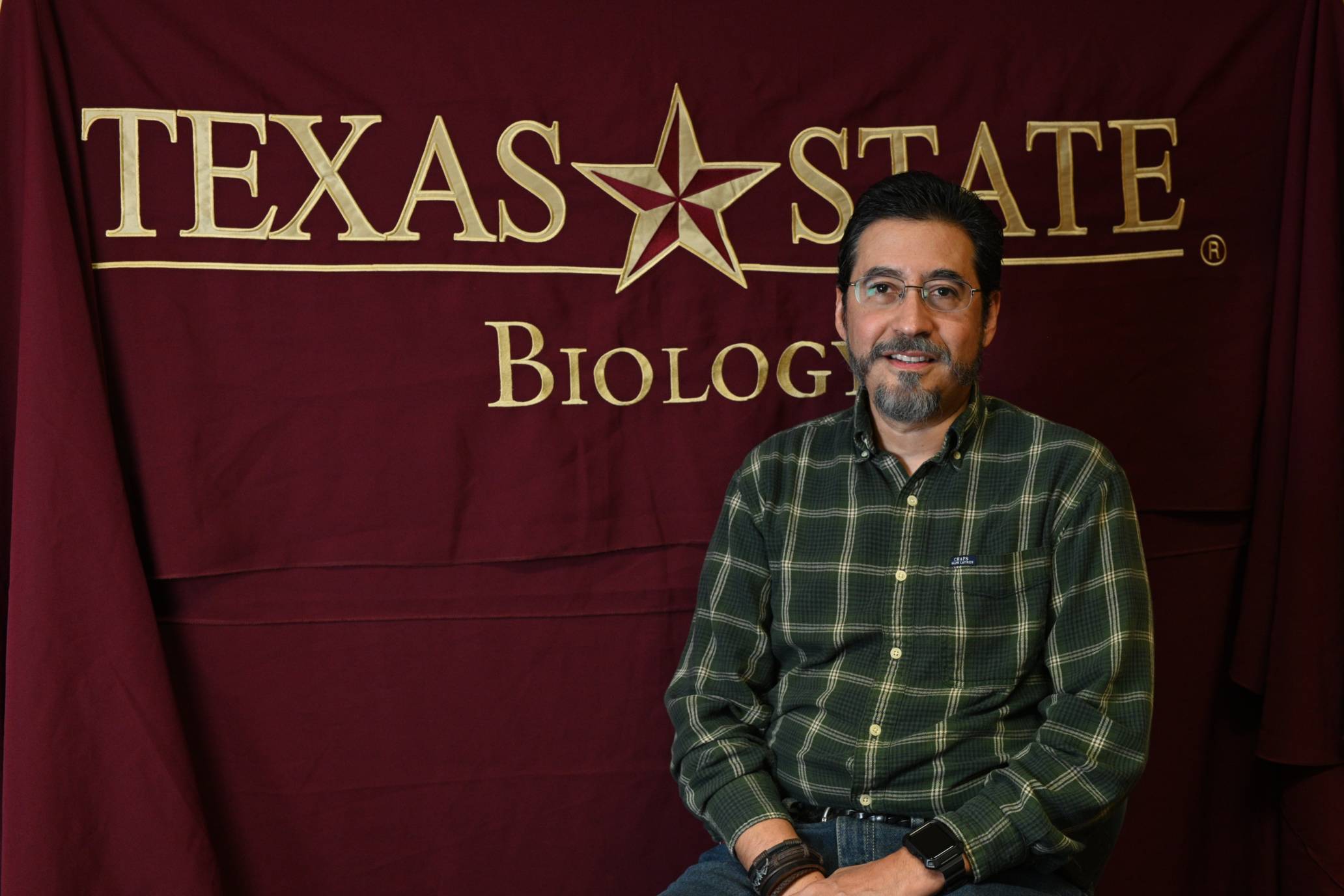Courses
Techniques in Wildlife Management (BIO4435/5435)
Wildlife Management (BIO4423/5423)
Biological Resources: Conservation and Planning (BIO4319)
Problems in Biological Sciences (BIO5390)
Internship in Biological Laboratory Techniques (BIO4481)
Ecology of Infectious Diseases in Wildlife (BIO7414)
Population and Conservation Biology Seminar (BIO7120)
Wildlife and Recreation: Impact, Management, and Policy (BIO4304/5304)
Conservation of Large Mammals (BIO4351H/5324)
Research Interests
Disease Ecology (Zoonotic diseases, Hantavirus ecology), Community Ecology (Temporal Niche Overlap, Metacommunity Theory), Mammal Ecology, Invasive Species
I use my background and training as an ecologist to address questions to understand the ecology of zoonotic diseases and invasive species. Since mammals are natural reservoirs for many zoonotic diseases most of my work has been devoted to this taxonomic group, especially rodents and bats. Beyond my interest in disease ecology I also have done research on theoretical aspects of community ecology, specifically on the analysis of assemblage-wide temporal niche overlap and elements of metacommunity structure. I address these questions using a variety of approaches that include modelling, null models, and analyses of both published and empirically data generated at my lab. Although my research interests are wide they are intertwined and my goal is to integrate the study of community level dynamics in mammalian hosts to understand the dynamics of pathogen transmission.
Selected Publications
Salgado, R., I. Barja, M. D. C. Hernández, B. Lucero, I. Castro-Arellano, C. Bonacic, and A. V. Rubio. 2022. Activity patterns and interactions of rodents in an assemblage composed by native species and the introduced black rat: implications for pathogen transmission. BMC Zoology 7(1):1-11.
Cordoba-Aguilar, A., C. N. Ibarra-Cerdeña, I. Castro-Arellano, and G. Suzan. 2021. Tackling zoonoses in a crowded world: lessons to be learned from the COVID-19 pandemic. Acta Tropica 214:10780.
Weaver, S.P., C. D. Hein, T.R. Simpson, J.W. Evans and I. Castro-Arellano. 2020. Ultrasonic acoustic deterrents significantly reduce bat fatalities at wind turbines in Texas. Global Ecology and Conservation 24:e01099.
Milholland, M.M., I. Castro-Arellano, G.E. Garcia-Peña and J. N. Mills. 2019. The Ecology and Phylogeny of Hosts Drive the Enzootic Infection Cycles of Hantaviruses. Viruses 11(7):67.
Milholland, M.T., I. Castro-Arellano, E. Arellano Arenas, F. Gonzalez-Cozatl, G. Suzan, T. Schountz, S. Gonzalez-Padron, A. Vigueras, T. Maikis, B. Westrich, M. D. Esteve-Gassent, M. Torres, E. R. Rodriguez-Ruiz, D. Hahn, and T. E. Lacher, Jr. 2018. Species identity supersedes the dilution effect concerning hantavirus prevalence at sites across Texas and Mexico. ILAR Journal 58(3):401-412.
Rubio, A. V., I. Castro-Arellano, J. N. Mills, R. List, R. Ávila-Flores, and Gerardo Suzán. 2017. Is species richness driving intra-and interspecific interactions and temporal activity overlap of a hantavirus host? An experimental test. PloS one 12, no. 11 (2017): e0188060.
Arriaga-Flores, J. C., E. R. Rodríguez-Ruíz, J. P. Gallo-Reynoso, and I. Castro-Arellano. 2016. Total leucism in Neotropical otters (Lontra longicaudis annectens) from northern Mexico. Southwestern Naturalist 61: 63-68.
Esteve-Gassent, M. D., I. Castro-Arellano, T. P. Feria-Arroyo, R. Patino, A. Li, R. F. Medina, A. A. Pérez de León, and R. I. Rodríguez-Vivas. 2016. Translating ecology, physiology, biochemistry and population genetics research to meet the challenge of tick and tick-borne diseases in North America. Archives of Insect Biochemistry and Physiology, 92:38-64. doi: 10.1002/arch.21327
Donaldson, T. G., A. A. Perez de Leon, I. Castro-Arellano, E. Wozniak, W. K. Boyle, R. Hargrove, H. K. Wilder, H. J. Kim, P. D. Teel, and J. E. Lopez. 2016. Geographic distribution of Ornithodoros turicata: Assessments based upon climate variation and host diversity. PLOS Neglected Tropical Diseases, 10(2):e0004383. doi: 10.1371/journal.pntd.0004383
Meng, H., A. Y. Li, L. M. C. Junior, I. Castro-Arellano, and J. Liu. 2016. Evaluation of DEET and eight essential oils for repellency against nymphs of the lone star tick, Amblyomma americanum (Acari: Ixodidae). Experimental and Applied Acarology, 68:241-9. doi: 10.1007/s10493-015-9994-0
Esteve-Gassent, M. D., A. Grover, T. P. Feria-Arroyo, I. Castro-Arellano, R. F. Medina, G. Gordillo-Pérez, and A. A Pérez de León. 2015. Prevalence of Borrelia burgdorferi-infected ticks from wildlife hosts, a response to Norris et al. Parasites and Vectors 8:129. doi:10.1186/s13071-015-0739-z
Suzán, G., G. E. García-Peña, I. Castro-Arellano, O. Rico, A. V. Rubio, M. J. Tolsá, B. Roche, P. R. Hosseini, A. Rizzoli, K. A. Murray, C. Zambrana-Torrelio, A. Alonso Aguirre, P. Daszak, A. Prieur-Richard, J. N. Mills, and J. Guégan. 2015. Metacommunity and phylogenetic structure determine wildlife and zoonotic infectious disease patterns in time and space. Ecology and Evolution, 5:865-873.
Please see faculty member’s CV or website for a complete list of publications and additional information.
